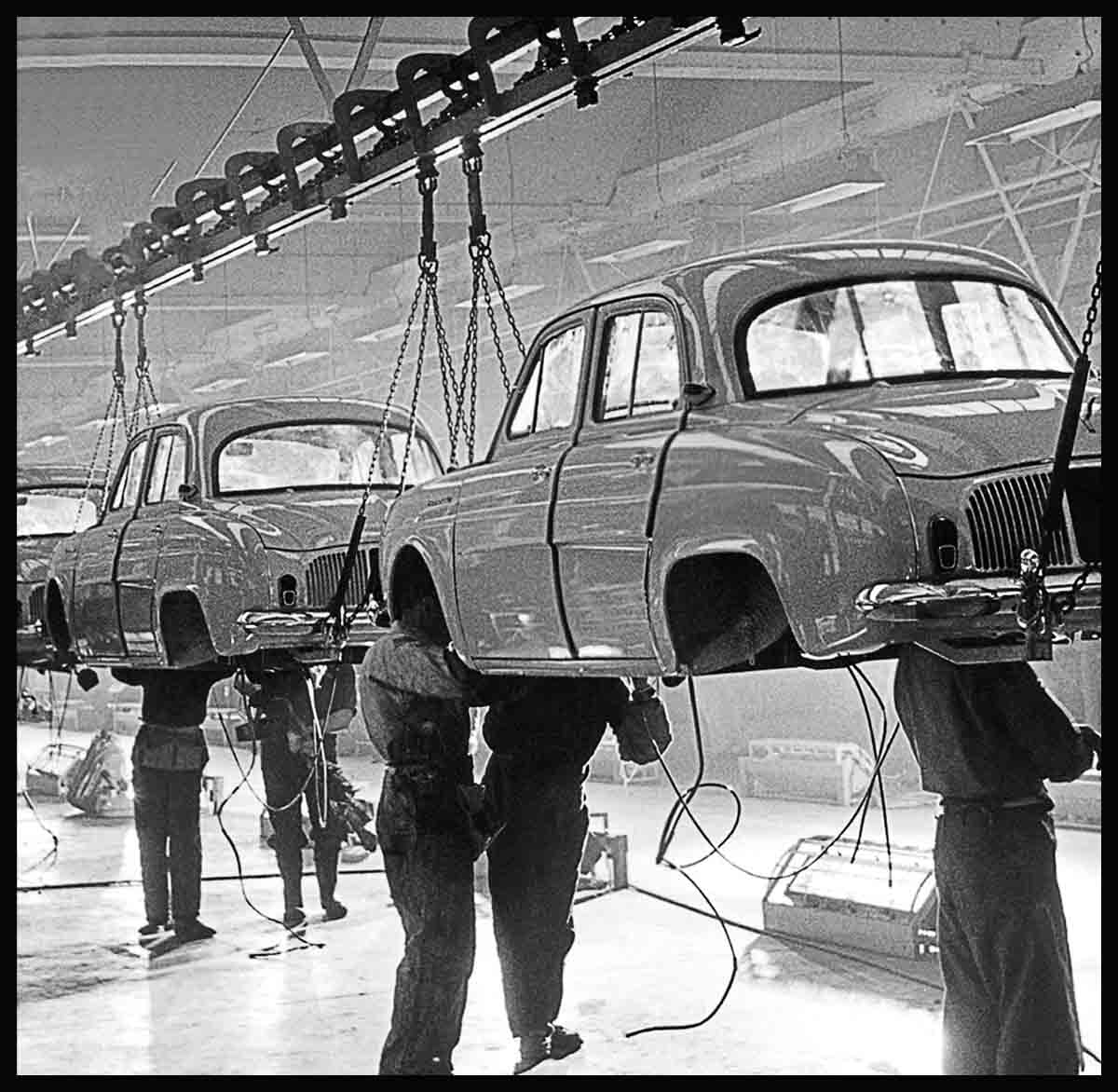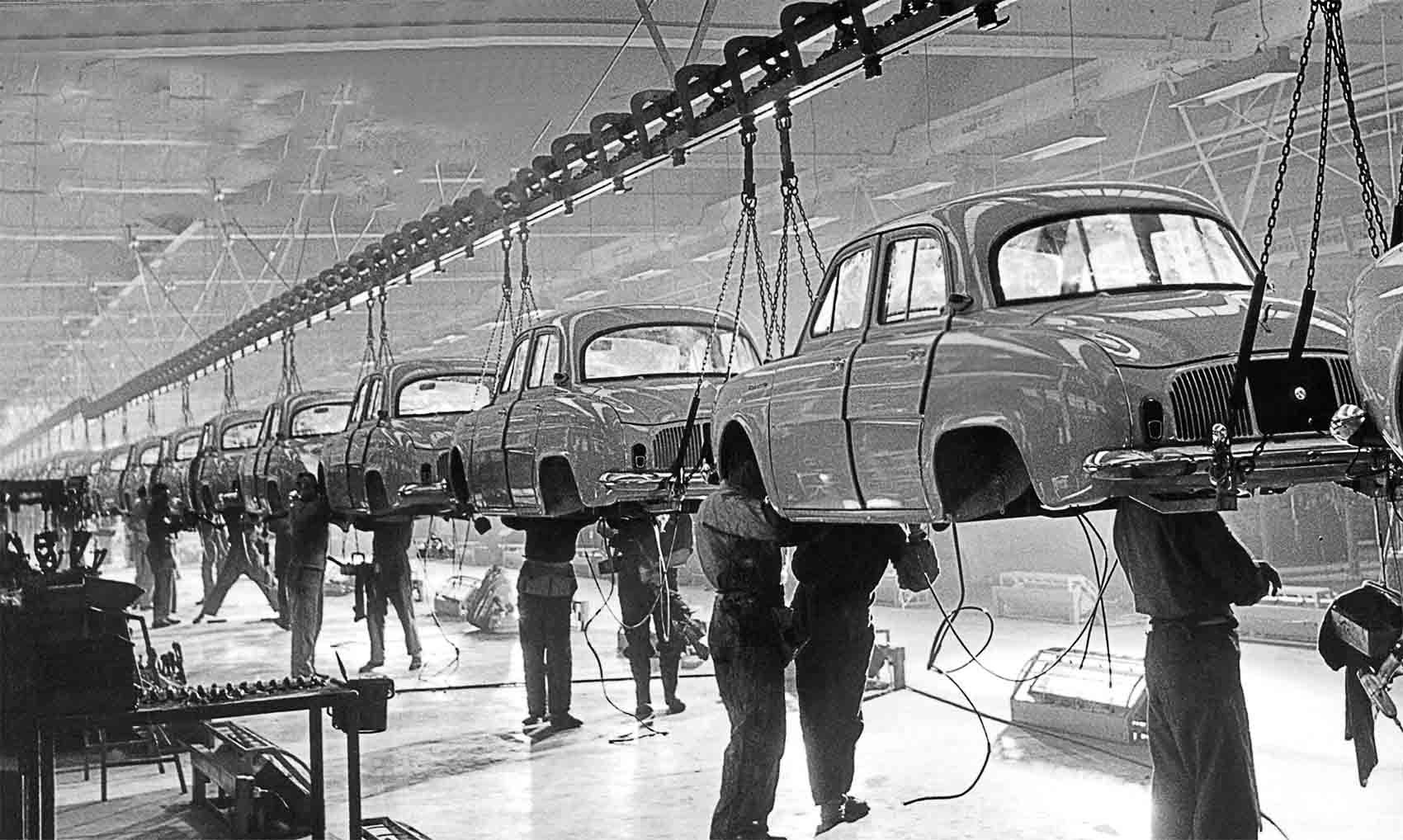
Mass-Production Boom
Every major European country saw a huge growth in demand for small family cars during the 1950s. Each nation had its own “champion”, and for France it was Renault. Nationalized in 1945, the state-owned company soon became the leading car-maker in Europe, and so rapid expansion was inevitable. In 1952, Renault opened a major new plant at Flins, 25 miles (40 km) from its Paris base, and production began on a new economy car to succeed the profitable 4CV of 1946.
The state-of-the-art Dauphine marked the start of a new era for Renault, and continued the trend for rear-mounted engines that had been set by Volkswagen. The Dauphine was modern and inexpensive, and came in a range of pastel colors, with heating and adjustable seats available as standard. When it was launched in 1956, it became the star of the Paris Motor Show—a worthy successor to the 4CV.

EVER-GREATER VOLUMES
Booming sales saw production numbers increase, with a new Dauphine rolling off assembly lines every 30 seconds. Factory staff worked hard, installing parts necessary to unite the painted, trimmed, and glazed bodyshells with their drivetrain components.
Dauphine body shells travel along overhead tracks at Renault’s Flins plant, being made ready to accept their engines and gearboxes.
It is a quote. The Classic Car Book – The Definitive Visual History 2016




